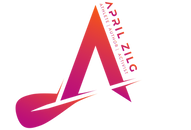SUP Cheap: Training Without a Heart Rate Monitor
- April Zilg

- Jan 10, 2018
- 3 min read
Updated: Jul 6, 2021
SUP Cheap: Training without a heart rate monitor
Develop an internal sense of effort and pace (you should do this even if you use a heart rate monitor)
I’ve been paddling since 2011, and I’ve never owned a heart rate monitor. I’m not the fastest paddler, nor am I the slowest. Maybe one day I’ll buy one and see what all the hype is about. Granted, heart rate monitors are relatively inexpensive when you look at the cost of the board and paddle, I’m still always looking for ways that I don’t have to spend more money. Even though I do believe that they can aid in training, I think that humans can get along fine without one. A brief example being Kathy Alfino, who has been at the podium at the Ironman World Championships: she doesn’t use a heart rate monitor and after racing for 29 years stated that her times are faster the older she gets.
Although heart rate monitors can be beneficial for some, they can also be misleading. Fluctuations in heart rate may not correlate with you actual effort during an exercise session. Lack of sleep, stress, caffeine, hot weather, and dehydration can all increase your heart rate anywhere from a few beats to 7.5% of your heart rate. The readouts need to be constantly interpreted by the user and effort adjusted to maximize your training. By taking the readout too seriously, and not listening to your body you could undertrain and never reach your goals. With the small errors associated with heart rate monitors, it becomes important for a paddler to know their own body.
If I’m going to use base my training off of how I’m feeling anyway, why do I even need a heart rate monitor?
The main argument from seasoned heart rate monitor users is that paddlers (or other athletes) will injure themselves by going to hard too fast or training in the wrong zones. While this can, in fact, cause more harm than good, I don’t think the argument has anything to do with the use of a heart rate monitor. These same people that want to train hard will do so with or without a heart rate monitor. The keys to any training plan are KNOWLEDGE and a little self-discipline. At the most basic level, you have to train both your aerobic and anaerobic systems by alternating fast and slow workouts through a series of build weeks and recovery weeks. This can be accomplished with or without a heart rate monitor, but a quality training plan helps.
So, bottom line, how do you train without a heart rate monitor?
How can you know when you’re training too hard or too light?
The key is to develop a good calibration of your mind-body! It starts with honesty with yourself and personal reflection of the stresses on your body, or perceived exertion. This chart also comes in handy:

This chart gives color zones to your exertion levels to help you select a training zone. These are valuable in zone-based training programs. The BORG scale ranges from 6-20 and can be cumbersome to remember as easily as the colors. But, it is a neat scale because the numbers, when multiplied by 10, are roughly equal to a person’s heart rate at that perceived exertion!
How to use it: Begin Exercising. Determine your perceived exertion from a combination of factors: increased respiration or breathing rate, ability to talk, increased sweating, and your level of fatigue. Rather than relying on any one factor, be sure to use a combination to gain a more accurate picture of your exertion. Adjust your speed/cadence to stay within your training zone. Listen to your body and your breath. Try singing. Can you sing an opera during intervals? You’re not going hard enough! Are you breathing heavily during an “easy” paddle? You’re going too hard! Use the comparisons in the table above, such as walking and talking, to get a better understanding of what you should feel like in each training zone.
Note: Do NOT compare yourself to other paddlers, their times, or their speeds. Don’t even compare your own speed from another day. If you are using a zone-based training program the most important thing is to train in the appropriate zone.
With practice, this method will become second nature. What’s better is that by developing your internal sense of effort and pace you will be more adept at interpreting a heart rate monitor if you ever get one.



Comments